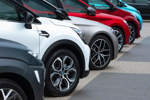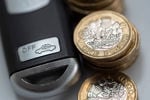Mediafleet can be contacted on 01608 664931 or via www.mediafleet.co.uk.
THINK of the various fleets with unusual colours forming part of their livery.
We won’t name names but there are numerous firms whose corporate identity demands cars and vans in unusual shades – fluorescent orange, luminous green, bright red and so on.
Historically such fleets would either order their vehicles in those colours or have them sprayed up once they arrived. Either way, when it comes to remarketing, you’re left with a crazy-coloured van to sell. And a gaudy vehicle spells disaster when it comes to residual values.
Which is why many fleets are turning to the world of vinyl wrapping. No longer the preserve of ’70s car seats and LPs, vinyl offers a more cost effective way of branding your vehicles without the disadvantages of paint.
The process is simple – vehicles are wrapped with adhesive sheets of vinyl, available in a huge range of colours. The original colour can be completely covered, meaning fleets can buy the vehicles in a colour that will maximise RVs. Vinyl can also be printed with any number of designs up to photo quality.

Barnaby Smith, sales director of wrapping firm Mediafleet, said he originally viewed the process as an advertising medium, allowing firms to feature images of their products on the side of vehicles.
But it soon became clear that there were further uses to be found. ‘Quite a few firms said ‘we’re interested just in wrapping the vehicles, not in printing’,’ Smith said.
‘We can use stock colours or match colours to replace a painted van.’
Smith said wrapping could last for up to seven years with the right grade of vinyl. It protects paintwork from fading and stonechips, and can be removed at a fraction of the cost of a respray.
To test the effectiveness of vinyl wrapping, Fleet News set Mediafleet a challenge.

A change of colour on a van would be just too easy – we wanted something a bit more tricky.
So we asked them to turn our long-term orange Ford Focus ST into an eye-catching race car replica, sporting the classic Gulf livery seen on the Le Mans winning Ford GT40s of the 1960s.
And here’s the crunch – they had to design it, wrap it and then return it back to its original state in just one day.
Early on a Thursday morning, designer James Hughes used a virtual 3D model of the Focus to plot the design.
Then the rolls of vinyl were wheeled out, and the wrappers began their work.

Each panel of the Focus was covered in vinyl, which was then heated to shrink around corners and cut to shape.

Fittings and fixtures were removed, covered and reattached, and finally the detailing such as numbers, logos, stripe and pinstriping were added.
Removal
AFTER two hours, the Focus is back to its original state. The only tell-tale sign is the line of dirt where the vinyl ended and the original paint remained uncovered.













Login to comment
Comments
No comments have been made yet.